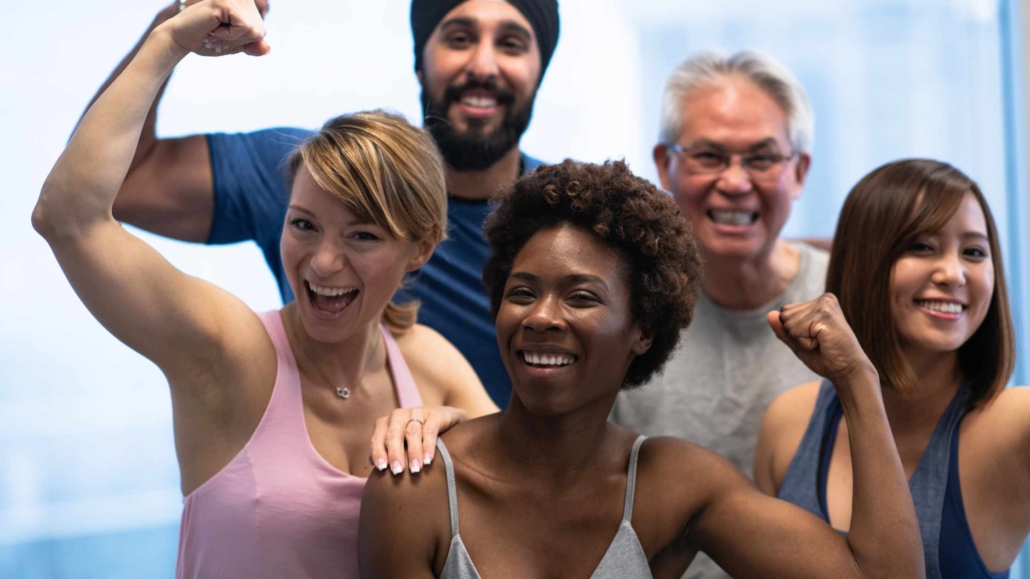Last Updated on November 19, 2024 by
Are you a group exercise instructor wanting to keep your classes safe and supportive for all participants? Safeguarding adults is crucial to creating a safe environment where everyone can thrive.
Our guide will help you implement safeguarding practices effectively, understand why they matter, and ensure you understand your safeguarding responsibilities.
To learn more about safeguarding practices and get practical tools, download EMD UK’s comprehensive safeguarding guide for free.
Key Takeaways:
- Safeguarding adults is a critical responsibility for group exercise instructors, ensuring a safe environment for all participants.
- Understand the importance of having safeguarding policies and procedures in place to protect both clients and your fitness business.
- Changes in the law mean instructors must maintain professional boundaries, especially when working with young people aged 16 and 17.
- Evaluating and updating your safeguarding policies regularly is essential for staying compliant and keeping your participants safe.
- Seek support from experts like the Ann Craft Trust to ensure you have the right tools and resources for safeguarding.
What is Safeguarding?
Safeguarding adults is the practice of protecting individuals, especially those at risk, from harm, abuse, or neglect.
It ensures that every participant in your classes, whether a child or adult, can enjoy their activities without fear of harm from those around them. This includes children, young people, and adults who may be vulnerable due to age, disability, or personal circumstances.
Safeguarding is not just about preventing harm—it’s also about creating an environment where everyone can thrive physically, mentally, and socially.
As NHS England states:
“Safeguarding means protecting a citizen’s health, wellbeing, and human rights; enabling them to live free from harm, abuse, and neglect.”
Why Safeguarding is Important for Instructors
As a group exercise instructor, you have a duty of care to your attendees. Just as you conduct risk assessments to avoid physical injuries, safeguarding is your responsibility to prevent abuse or neglect, ensuring that all participants, including children and adults, are protected.
The Care Act 2014 places the safeguarding of adults on a statutory footing, meaning if you regularly work with the public, you play a crucial role in protecting those who may be at risk of harm.
Adults may be vulnerable to different types of harm, including physical, emotional, or financial abuse. The individuals who could be responsible for abuse are varied and could include:
- Spouses, family, and friends
- Professionals and paid staff
- Volunteers or even strangers
It is vital to create an environment where abuse and exploitation are not tolerated, and everyone feels safe to report concerns appropriately.
Within your organisation, safeguarding should be part of everyday practice, ensuring both children and adults are protected.
Changes in the Law: Positions of Trust
As of June 28, 2022, the laws regarding “positions of trust” changed, particularly in sport and physical activity contexts.
The law aims to protect young people aged 16 and 17 who may be vulnerable to exploitation by adults in a position of authority.
For group exercise instructors, this means that it is illegal to engage in a sexual relationship with a young person aged 16 or 17 if you are in a position of trust, such as regularly coaching, supervising, or instructing them in sport and physical activity.
This change emphasises the importance of maintaining professional boundaries and safeguarding your clients effectively. As someone in a position of trust, you have a role to play in ensuring participants are safe from sexual abuse and exploitation.
Five Steps to Implementing Safeguarding in Your Fitness Business
1. Evaluate Your Current Situation
You don’t need to be a safeguarding expert, but getting the basics right is crucial. Start by assessing:
- Your current knowledge of safeguarding
- The existing policies and procedures in your business
- Where you can go locally for safeguarding support
Tools like those from the Ann Craft Trust can help you conduct an evaluation and create an action plan tailored to your business.
2. Keep Your Policies and Procedures Up to Date
Having a safeguarding policy in place is essential. It’s not just a formality—this policy is the foundation of keeping your clients safe. Your safeguarding policy should be reviewed annually to ensure it remains relevant.
If you work as self-employed community instructor, it is your responsibility to have a safeguarding policy in place. However, you should also check with the venue to understand any safeguarding policy they have.
If you work in a leisure centre, you will likely follow their safeguarding policy. You should agree at the start that you will follow their safeguarding policy and ensure you attend any induction and refresher training that is held.
If you employ staff or have instructors covering your classes, they should also be regularly reminded to refresh their knowledge of these policies.
If you don’t have a safeguarding policy yet, resources from the Ann Craft Trust can help you get started, offering top safeguarding standards and best practices for your organisation.
Codes of conduct are also crucial in setting clear expectations of behaviour for both participants and instructors.
3. Define Roles and Responsibilities
Knowing who the safeguarding lead is within your business is essential. If an incident occurs, do you know who would handle it?
As an instructor, you may be the designated safeguarding lead, especially if you run the business solo.
A safeguarding lead officer is responsible for overseeing safeguarding policies and procedures, responding to concerns and incidents, and empowering others to report any safeguarding issues.
For small operations where you are the sole instructor, being well-informed and proactive is key. Consider seeking training and resources to ensure you can act confidently if an issue arises.
4. Promoting a Safer Culture in Your Classes
Creating a safer culture is about making sure everyone who attends your classes feels heard, safe from harm, and valued. According to the Ann Craft Trust, a safer culture is built on three pillars:
- Listen: Everyone should feel confident that their concerns are heard and addressed appropriately.
- Learn: Continuously learn from experiences to improve your safeguarding efforts.
- Lead: Lead by example to empower others to speak up and challenge unsafe practices.
Encouraging open communication, ensuring all participants know they can voice concerns, including parents or carers, and promoting an inclusive atmosphere are all parts of building this culture.
Remember that the welfare of participants is paramount, and they should leave feeling happy and positive about their experience.
5. Seek Support from Experts
You’re not alone in this journey. The Ann Craft Trust offers extensive safeguarding guidance and resources for safeguarding adults.
They have 30 years of experience in this field and provide tools and advice to help you effectively safeguard those in your care.
Additionally, your local area will have a Safeguarding Adults Board that collaborates with various organisations to keep at-risk adults safe at the local level. This may include your local authority, which plays a significant role in safeguarding efforts.
If you also work with children, the Child Protection in Sport Unit (CPSU) has resources and training to help ensure you understand child safeguarding requirements.
Practical Resources for Safeguarding
To make safeguarding simpler, here are a few valuable resources for you as a group exercise instructor:
- Instructor’s Guide to Safeguarding: This resource is specifically designed for group exercise professionals and includes information from EMD UK, the CPSU, and the Ann Craft Trust. It provides actionable steps to implement safeguarding practices in your classes.
- Local Safeguarding Adults Board: Get in touch with your local board for support, information, and guidance on safeguarding protocols.
- Ann Craft Trust: Visit their website for downloadable guides on creating safeguarding policies and understanding your responsibilities.
- Codes of Conduct: Set clear expectations for behaviour in your classes to help maintain a safe and respectful environment.
Making Your Fitness Classes Safer: Final Thoughts
Safeguarding adults is an essential part of being a responsible group exercise instructor and ensuring your organisation meets national safeguarding standards. It’s about protecting your clients, creating a positive and safe environment, and understanding your role in preventing harm.
By evaluating your current practices, staying informed, and promoting an inclusive culture, you ensure your fitness business is a safe place for all.
Remember, safeguarding adults doesn’t need to be complicated—it’s about care, responsibility, and creating a space where everyone, including adults at risk, can thrive.
Want to strengthen your safeguarding knowledge? Download our free Group Exercise Safeguarding Guide and get expert guidance tailored specifically for fitness instructors.



